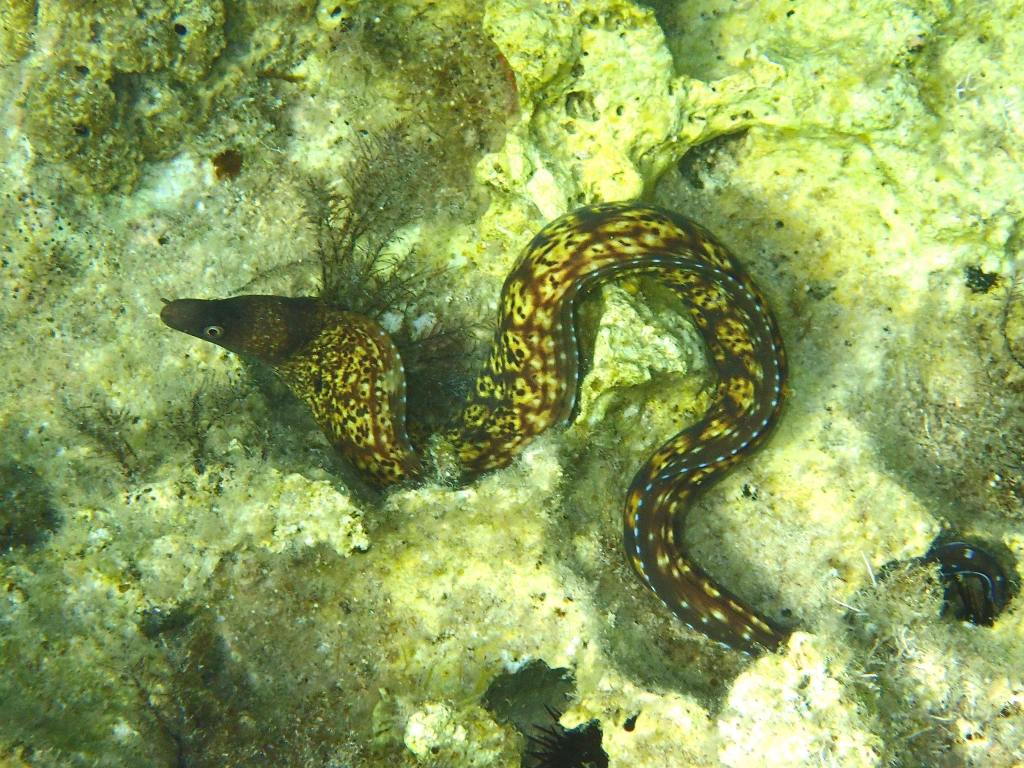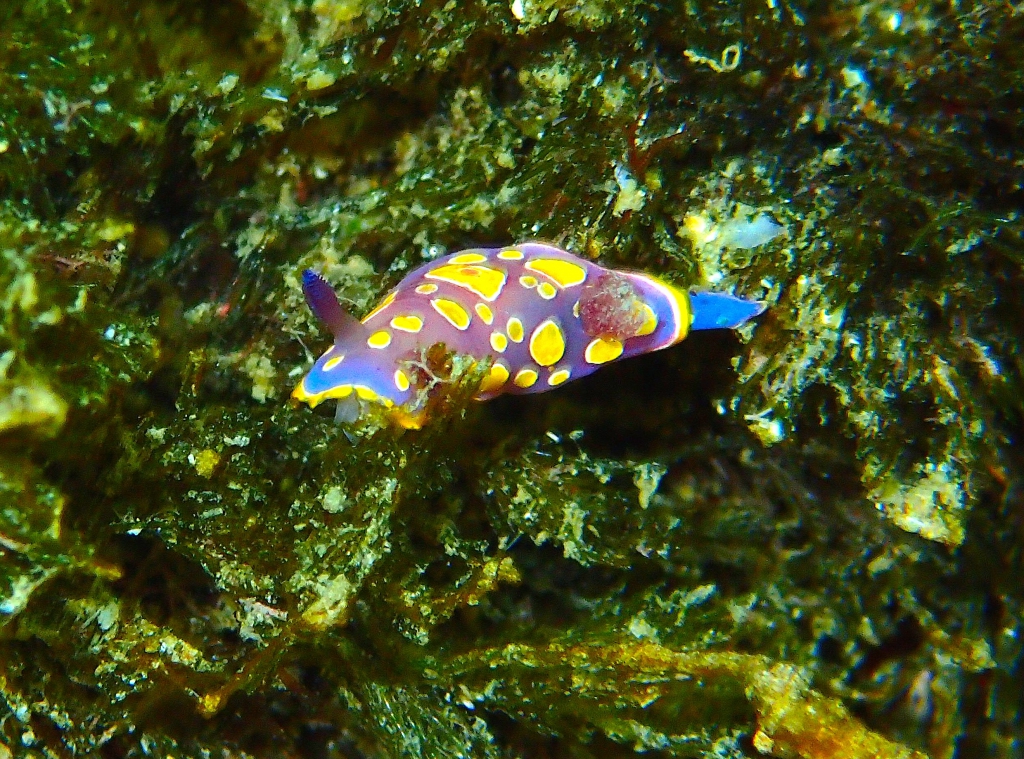Volunteering with BICREF – Enjoying and learning about marine biodiversity
Florian LANGLET and Vicky LOUIS, Photos by: Benjamin NICOLAS (BICREF)
The sea around the islands of Malta abounds with an amazing wealth of different species including marine mammals, fish, crustacean to invertebrate species. As volunteers, with the Biological Conservation Research Foundation (BICREF), to assist in the long-term monitoring efforts of this environmental NGO, we have learned so much about this interesting diversity of life so unique to this sea and the Mediterranean.
Indeed, every day, using a simple snorkel mask and tube, any tourist or local can observe this wonderful biodiversity too. It is possible to observe both animal and plant species: some very common while others very rare. The Ornate wrasse, one of the more widespread fish species seen in Maltese waters, is one of the most colourful coastal species. Its incredible colours are no less impressive than any aquarium fish coming from tropical waters. Though it is known to be found in the eastern Atlantic Ocean it also inhabits the Mediterranean and represents one of the diverse wrasse species found in these waters. However, some of these species are far from common and BICREF is collaborating with the Conservation Biology Research Group of the University of Malta in aid of the many species requiring conservation through accurate scientific knowledge.

A typical view seen from the end of August and September is the harmless jellyfish, Cotylorhiza tuberculate. It is yellow and wears purple tentacles which seem to invite little fish to use it as a refuge as it travels past. Its top colour and shape clearly reminded us of a fried egg, hence its common name. BICREF promotes the CIESM Mediterranean JellyWatch programme effort of forwarding jellyfish bloom information to the national contact for Malta, Dr. Adriana Vella, so that data may be collated and analysed at Mediterranean regional level as well. It was great to be part of such an international effort too.

The Mediterranean moray eel (Muraena helena) is a species as intriguing as impressive. It can reach 1.50 meters in adult size. Its long body allows it to move between the rocks and to shelter in crevasses. Encountering a moray remains difficult because it hunts during the night, mainly fish and octopuses, thanks to its two thin and sharp teeth. It is a solitary and territorial fish. To observe one of them, you will have to carefully observe the rocky seabed and be patient. It is worth it!

Among the various intriguing miniature jewels of this sea we were grateful to have come across one of the most beautiful and brightly coloured Mediterranean sea-slug, Felimida luteorosea. It only measures between 0.5 and 3 centimetres in length usually and can therefore easily be missed among the algae on the rocky seabed. It is reported to feed on sponges and to inhabit Posidonia oceanica meadows, still a lot needs to be discovered about the biology and reproduction of this species. Therefore, being able to spot this species at different times of the year to follow its distribution and abundance is useful to decrease the gaps in knowledge.
Unfortunately, mass tourism and a high population density that gathers on the beaches of these islands in summer has harmful consequences on marine biodiversity if unchecked and managed carefully. Indeed, a lot of people pollute the sea throwing their litter in the water or on the seashore. BICREF has been recording species diversity side by side with common wastes found on the shore. Among the most common wastes one finds cigarette butts, plastic bottles, plastic bags and wrappers of food. We were shocked to see so much pollution contrasting with the wonders of these spectacularly unique islands. This pollution has a devastating impact on the biodiversity because it introduces external elements with toxic and pathogenic effects in the life of many marine species. As a consequence, fish and other organisms can be hurt or killed by it.
Moreover, the degradation of the habitats has a significant impact on the species which may easily lead to a drastic decrease in the number of individuals of each population. So it would be regrettable to lose such important natural wealth of the Maltese natural environment just because of something that we are all able to avoid: dumping wastes carelessly and accumulating pollution.
We often limit our environmental responsibilities by thinking « What will it change if the Ornate wrasse or any other organism disappears? ». Well first of all as species decrease in population size they lose their resilience to survive in an ever changing environment. When Maltese biodiversity richness is reduced it can no longer remain a touristic attraction, such as the very important SCUBA diving industry that these islands enjoy. Tourism represents a significant part of the Maltese economy. Additionally, one may need to appreciate that each organism has an important role to play in the network of marine life and the loss of an individual species or population, as little as it may seem, impacts the food chain and the goods and services marine life provides us with. The scarcer these resources are the more expensive such resources become and the more problematic the sharing among the many different entities that exploit natural resources. Also we need to understand that accumulation of pollutants may increase the amount of toxic substances found in our environment, food and our bodies too leading to human health problems.
Conservation research and monitoring is vital to the future of Maltese natural capital and natural heritage for locals and tourists to enjoy. We are thankful to the NGO BICREF for giving us this great opportunity to learn while discovering hundreds of species on and around these islands.
Any one can join BICREF in this vital work. BICREF is actively working on terrestrial and marine biodiversity.
Send in your sightings while snorkeling, SCUBA diving or sailing around the Maltese Islands and send in your sighting reports.


